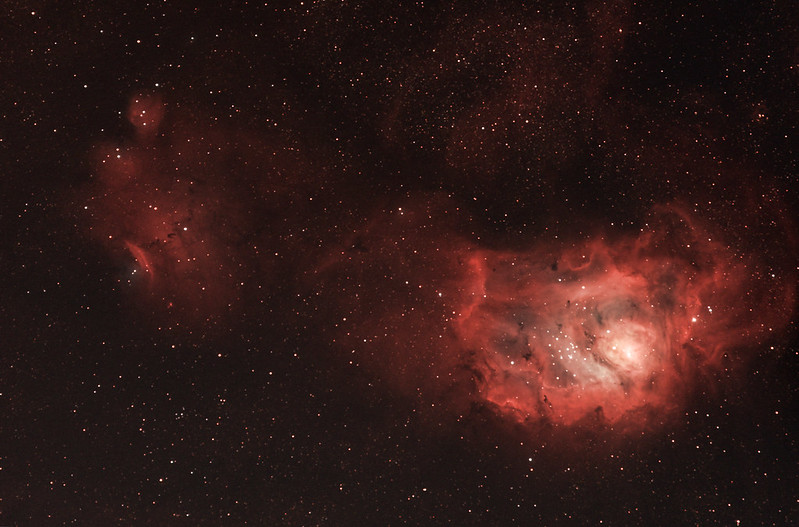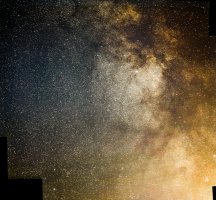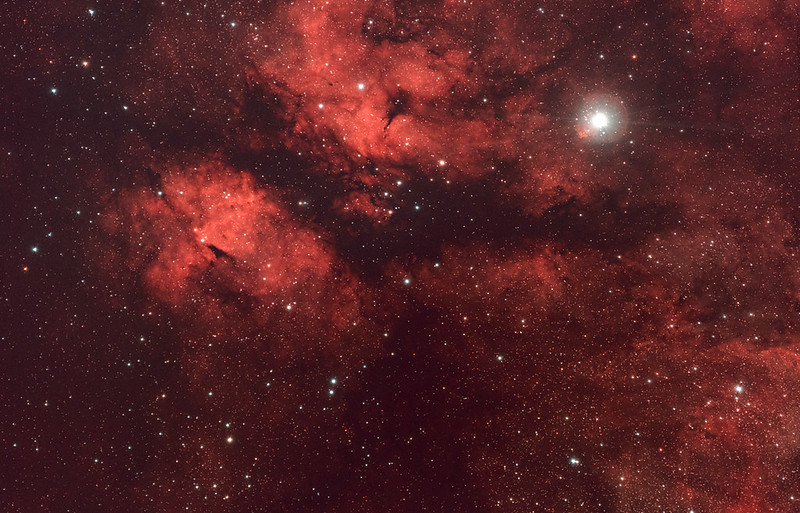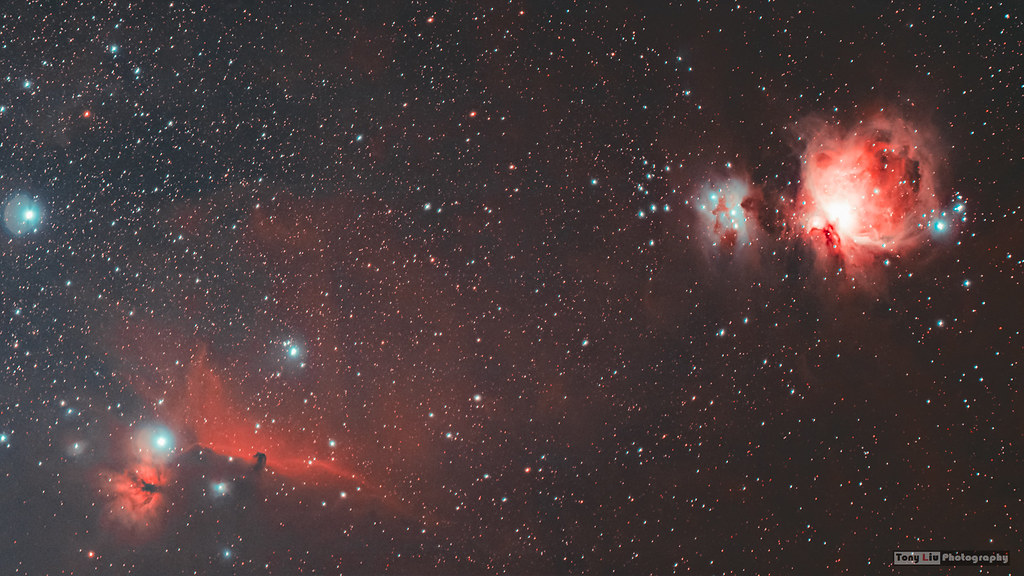You are using an out of date browser. It may not display this or other websites correctly.
You should upgrade or use an alternative browser.
You should upgrade or use an alternative browser.
Deep Sky Astrophotography
- Thread starter jrista
- Start date
I feel a little embarrassed about posting this, but I think it illustrates that one doesn't need specialist equipment to do deep sky astrophotography.
This is a section towards the core of the Milky Way, centred on Scutum (just above Sagittarius). Fixed tripod, no tracking, no filtering. The 100L macro lens wide open. A panorama of four stacks of 18-27 shots at 10 seconds each, ISO 4000. So not a huge amount of data, pushed to the max.
It's always a race up here, the galactic core only rises in summer, when there's precious little darkness. I'll try for something more official, using my tracking mount, if I get chance, but all the same - I'm amazed how much detail can be pulled out of a sky that appeared featureless and dark to the eye.
Some banding, colour imbalance, due to the camera and the different sky conditions on different nights.
This is a section towards the core of the Milky Way, centred on Scutum (just above Sagittarius). Fixed tripod, no tracking, no filtering. The 100L macro lens wide open. A panorama of four stacks of 18-27 shots at 10 seconds each, ISO 4000. So not a huge amount of data, pushed to the max.
It's always a race up here, the galactic core only rises in summer, when there's precious little darkness. I'll try for something more official, using my tracking mount, if I get chance, but all the same - I'm amazed how much detail can be pulled out of a sky that appeared featureless and dark to the eye.
Some banding, colour imbalance, due to the camera and the different sky conditions on different nights.
Attachments
Upvote
0
Upvote
0
telemaq76 said:
Beautiful photos! Thanks for sharing.
Upvote
0
can someone enlighten me about https://www.lightpollutionmap.info ?There's VIIRS 2017 and now a new option, ATLAS 2015, and there's a big difference.Places that are in cyan/dark cyan in viirs are orange in atlas.I know viirs is about light sources and atlas is about light polution at the zenith (which I consider more relevant for imaging).Which one do you use?
Upvote
0
testing out new software...short version is shut up and take my money
crop of wide field Orion (to just Horsehead and Flame)
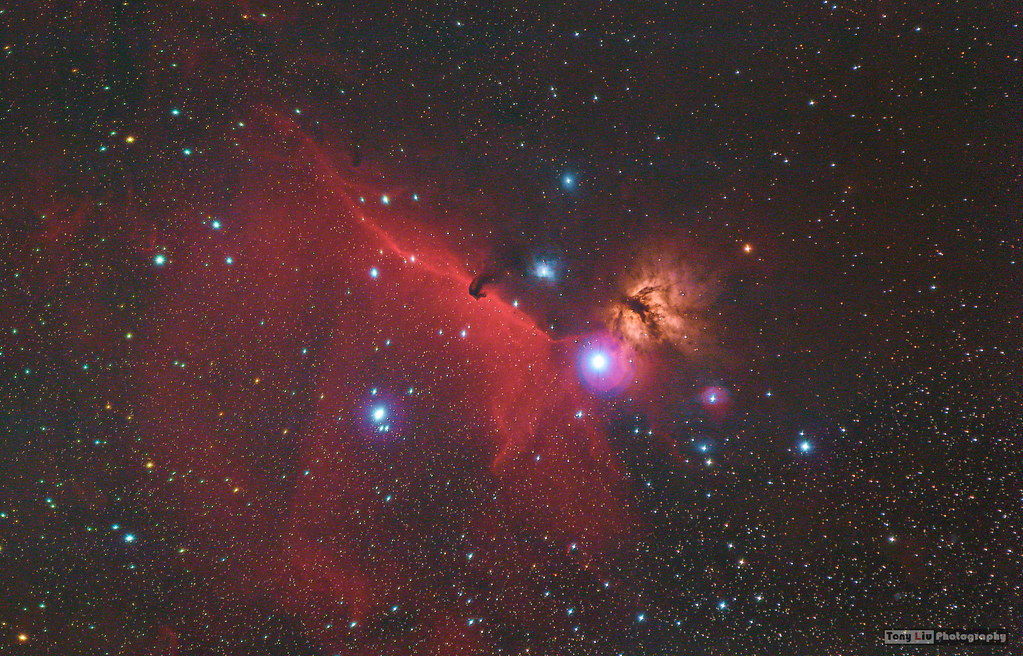 Horsehead Nebula Reprocessed by Tony, on Flickr
Horsehead Nebula Reprocessed by Tony, on Flickr
crop of wide field Orion (to just Horsehead and Flame)
 Horsehead Nebula Reprocessed by Tony, on Flickr
Horsehead Nebula Reprocessed by Tony, on Flickr
Upvote
0
Handrews said:Amazing work, Tony!
Would it be possible to share some details?
Regards,
Andrei
thanks Andrei!
yes silly me forgot the deets
heavy crop of wide field Orion (760D mod + 70-200L II @200mm), ~200 lights 30sec f/2.8 ISO1600, shot in bortle 5-6 sky (suburban backyard)
currently playing around with the Astro Pixel Processor, from what i read seems to do a fair bit of what PI does but more intuitive (and frankly i agree considering what a noob like me could get out of it already), it has light pollution/gradient removal which seems very similar to PI's DBE among few other things (some people are saying it's ability to do mosaic is easier and better than PI)
i think the software is only about 6 months old so the developer is still adding things to it (he responded to me that he's planning to add things like star reduction and what not in the future) from what i've seen so far does amazing job for integration then light pollution removal and colour correction, before moving over to like PS/LR to finish off the edits
my few days use so far i feel like this is a great software for people that wants some of the things that PI does but don't have the time or dedication to learn PI properly
hope that helps
Upvote
0
I find this Deep Sky Astrophotography amazing.
I live in a country with alot of cloud cover and rain so I think its difficult to get into this genre.
(I think it would be easier to learn if you were more guaranteed clear skies).
At some point everyone is a beginner.
The level of knowledge of techinique, gear and processing abilities appears to be quite high.
I've done wide field astrophotography (Milky Way) and the Northern Lights and star trails but nothing Deepsky.
Alot of the books written seem to be a few years old (they may still be valid).
Any suggestions where to start?
I have most of the photographic gear required (camera, lens, tripods) but not an up to date guider or others pieces of equipment required or the know how to do it.
Are there any good tutorials on the topic?
I live in a country with alot of cloud cover and rain so I think its difficult to get into this genre.
(I think it would be easier to learn if you were more guaranteed clear skies).
At some point everyone is a beginner.
The level of knowledge of techinique, gear and processing abilities appears to be quite high.
I've done wide field astrophotography (Milky Way) and the Northern Lights and star trails but nothing Deepsky.
Alot of the books written seem to be a few years old (they may still be valid).
Any suggestions where to start?
I have most of the photographic gear required (camera, lens, tripods) but not an up to date guider or others pieces of equipment required or the know how to do it.
Are there any good tutorials on the topic?
Upvote
0
Stewart K said:Has any of the incredible Astro specialists on here had a look for Mr Musk's space-borne Tesla vehicle???
The car is moving away from earth at a speed that is most usefully measured in kilometers/second. Since it was launched a day or so ago, it'll be only a couple thousands of an arc second by now. If you are lucky enough to find the direction with a 1200mm lens on a 24MPx APS-C camera, you could catch it as about 1% of a pixel wide.
The ISS is a different story since it is using one of the lowest possible earth orbits and is more than 100 meter wide in its longest dimension. Looking for that you could easilly get dozens of pixels on the target if you know where to aim: https://www.cloudynights.com/topic/437901-images-of-international-space-station-moon-transit/#entry5654989
Upvote
0
pretty happy with only 1 hour worth of data
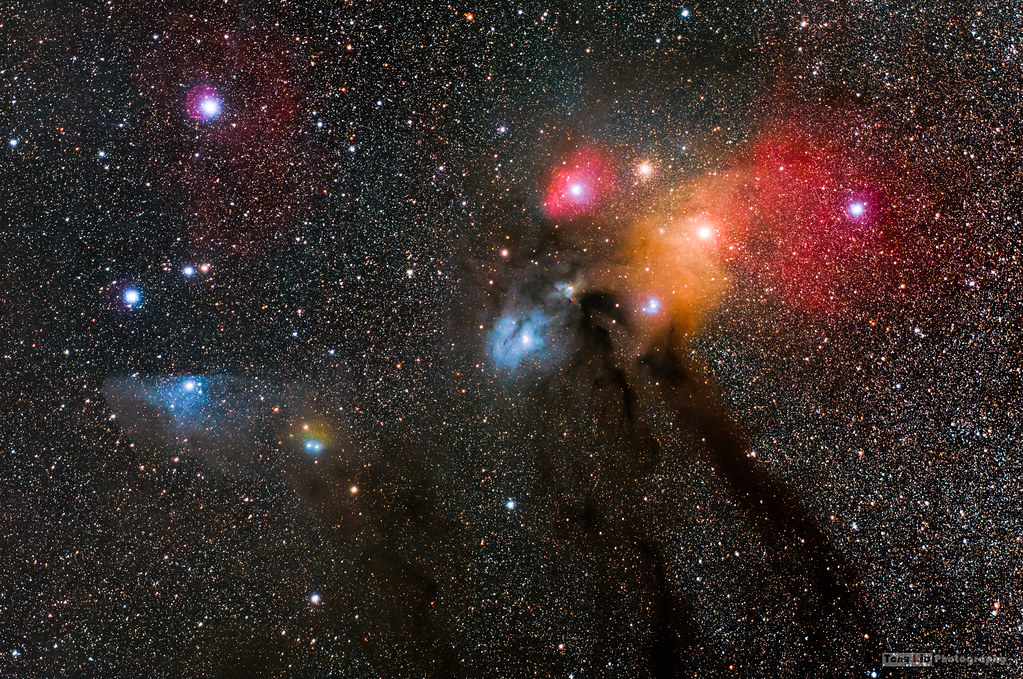 Antares, Rho Ophiuchi and Blue Horsehead by Tony, on Flickr
Antares, Rho Ophiuchi and Blue Horsehead by Tony, on Flickr
 Antares, Rho Ophiuchi and Blue Horsehead by Tony, on Flickr
Antares, Rho Ophiuchi and Blue Horsehead by Tony, on Flickr
Upvote
0

